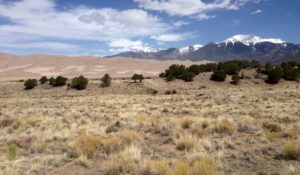 As you approach the Great Sand Dunes from the south you can tell that they are pushed up against the mountains. Those are the Sangre de Christo Mountains in the background. On Saturday when I went up to Westcliffe I was on the other side of them in the next valley to the east.
As you approach the Great Sand Dunes from the south you can tell that they are pushed up against the mountains. Those are the Sangre de Christo Mountains in the background. On Saturday when I went up to Westcliffe I was on the other side of them in the next valley to the east.
It’s hard to envision how large the dune field is without being there but I learned, as large as it is, the dune field is about 11% of an ecosystem that includes the mountains, the dunes, and wetlands, and the water that flows through them.
I did not opt for the wet feet hike over to the dunes. This is Medano Creek. It and Sand Creek flow down out of the Sangre de Christos on each side of the dune field eventually dissipating into an aquifer and emerging on the surface once again down valley from the dune fields as a giant wetlands. Geologists agree that the sand originally washed down out of the San Juan Mountains, which are across the valley, and were pushed up against the Sangre de Christo Mountains by prevailing SE winds. They also agree that the dune fields are not appreciably growing in volume but are recycled and reshaped by wind and water.
Yesterday was my last day trip. Although I’m anxious to see my kids it was a melancholy day. This morning, it’s one more cup of coffee, and then pack up and wander out onto the plains.
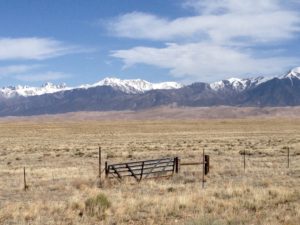
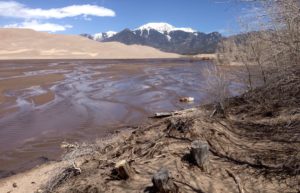
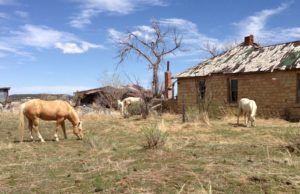
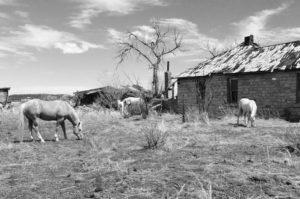
Thanks for the stop and pictures. I have longed to go there. Do you recall the print in our kitchen? My favorite Taos school painter, Ernest Leonard Blumenschien, his painting of the Sangre de Christi Mountains. Via Con Dios!!
Happy trails Eric! We enjoyed reading about your travels. Several spots we also visited in a our pop up, so it brought back good memories. Thanks for sharing.